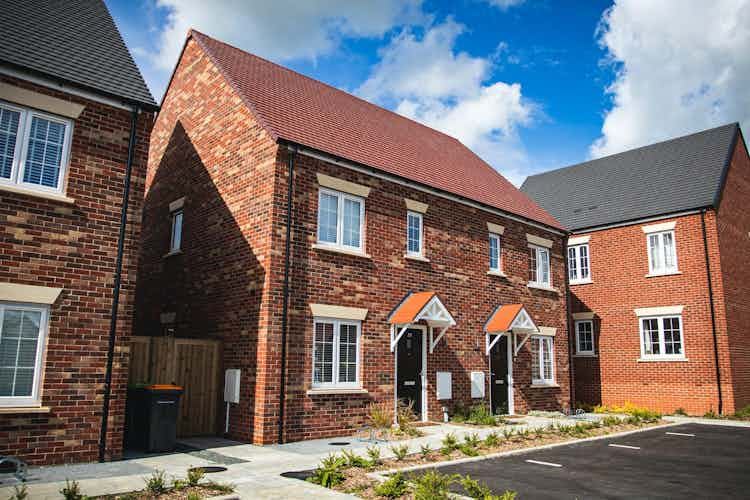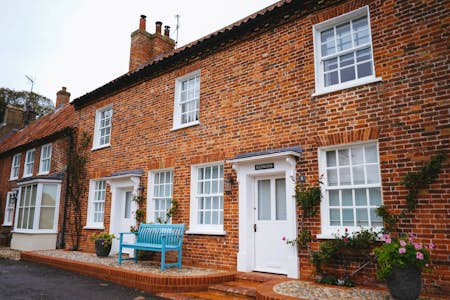Lenders’ confidence in loans on new build properties has seen substantial growth in recent years. Help to buy has offered additional benefits to homebuilders, financing up to 27% of homebuyers. As a result, both the financial and the new build housing market have been seeing substantial growth, which bodes well for prospective first-time buyers.
Some lenders impose an upper age limit on loans, making borrowing difficult. While it appears not possible past the 50-year mark, many options are still available for affordable mortgages. Especially if you already own property, you will find many options that put you in a stronger borrowing position.
Overview of a new build mortgage
Generally speaking, getting a mortgage is not too different regardless of the kind of property you are purchasing. However, the process can be daunting, especially if you are a first-time homebuyer in England. Lenders look at a few particular things when evaluating your mortgage application.
Lender’s criteria
Mortgages on new builds come with a tiered loan-to-value ratio (LTV) ranging between 75%-85%. First and foremost, mortgage lenders will check your credit score based on payment history and borrowing behaviour. The higher your score, the greater the chances of your application being approved and getting lower interest rates. A typical mortgage credit score requirement is upwards of 620, with lower interest rates past 700. Multiple factors influence average credit scores; that said, average credit scores have increased in the UK for people over 50, with many surpassing a score of 800.
Your debt-to-income (DTI) ratio is also checked. It is ideally capped at 43%. If you surpass this, you may have to settle for a lower mortgage and a smaller house. This may not be an issue if you are already planning on downsizing.
The deposit you can put down for your home and your work history is also checked. This should not be a problem when you have a significant work history and a provable source of income.
The mortgage process
This process involves several steps. These include:
- Finding a mortgage broker, ideally specialising in construction or new build loans, can help you through the process.
- Checking your credit score before you start so you know what to expect.
- Going through your finances with your broker and working out how much you can realistically borrow.
- Approaching a lender with this information to get pre-approval.
- Approaching a lender for a new build mortgage.
Learn more about getting a mortgage for a second home.
Specific requirements for applicants above 50 years of age
Since a reduced future income is expected in retirement, getting a mortgage when we are over 50 can be tricky. Mortgage lenders often have an upper limit as part of their lending criteria. This is based on the borrower's maximum age against the mortgage's duration. This usually ranges between 75-80 years of age, making it slightly difficult for those over 50 to get a mortgage based on income alone. However, built-up equity in their existing home, among other qualifiers, can make the process easier.
As a borrower, you must supply proof of reliable income to get you the best mortgage deal. You'll need to prove a steady and reliable income to qualify for the mortgage, which can come from:
- Pension forecasts
- Employment and self-employment earnings
- Buy-to-let investment earnings
- Other investments
The same general criteria discussed above will apply when assessing the affordability of a new build mortgage or a remortgage. However, lenders may give different factors greater importance depending on the mortgage you are considering. For example, the time to complete your home is essential, as you often only have between 3 to 6 months for mortgage approval.
If you are an over 50 first-time homebuyer, many mortgage deals and products are still available. The Help to Buy equity loan scheme may be helpful but is only available to first-time buyers on a new build home - sold by a Help to Buy qualifying homebuilder. There are different specifications for England, Scotland and Wales to consider. The nationwide offer will close to applications at the end of October 2022.
Purchasing a new build home on higher equity
If you are already a homeowner, you can get a lower mortgage rate if you have significant equity in your existing property. Built-up equity on the home you purchased a while ago can improve your borrowing power, as you can put it towards the deposit on your new build. This will be a financial relief as you will also reduce monthly instalments.
Lower Equated Monthly Instalments (EMI) make financial planning more manageable, as you know what you owe each month. Equated Monthly Payments are the payments you pay against your mortgage each month that lead to a complete payoff of the loan at the end of the term. Of course, you should also consider the other side, where your loan period might be extended. However, low EMI frees up your monthly finances, which can then go towards setting up and preparing for your new home.
You also have some other options that can cut down your monthly payments. These include:
- Extending the period of your loan: While it frees up current finances, it does mean a longer debt period.
- Temporary payment reduction: You will still have to catch up with payments at some point.
Equity loans work out best for homebuyers who are already set up with a house and are looking to make a move. With equity as a safeguard, you are better positioned to obtain approval on more favourable terms.
The appreciation in the value of the property you currently own will determine how much equity you have built up and the sort of finance deal available to you. Shop around and find the most appropriate terms before closing a deal. A mortgage advisor can help you understand all your options before deciding.
Downsizing using a new build
New build homes are attractive for many reasons. They offer a brand new space that you can customise to your taste; they are more energy-efficient and provide a fresh start. New builds also come with a risk protection warranty from the National House Building Council (NHBC), which makes them a viable investment for many people.
Downsizing from a larger home has its benefits. For example, you may choose to downsize because the space is no longer needed, but it can offer other advantages, such as:
- Releasing equity locked up in your house: These proceeds can be put to better use elsewhere, such as paying off the new build mortgage, saving, or providing financial assistance to children or grandchildren.
- Reducing monthly expenses: To help repay the cost of a large house, look at ways you can reduce your living costs.
- Reduced maintenance requirements: Smaller homes generally have fewer issues to deal with. On top of that, the new build house you are downsizing to should require less maintenance and upkeep, lowering your costs in the long run.
Things to consider when downsizing
Downsizing, like any other house purchase, includes a few things you must take care of. It involves all the usual requirements to fulfil when home buying, which are helpful to remember in the form of a checklist:
- Stamp duty fees: This is a sliding scale based on the property price. Typically, the cost is about 5% on houses above £250,000. The payment will be due after the new build purchase has been completed.
- Estate agent, conveyancing, and legal fees: These fees are involved in the buying and selling process. You will need their services to close the deal on your current home and to manage the legal aspects of your new one.
- Homebuyer surveys and home demonstrations: These necessary elements allow you to supplement the sale of your house and your move-in, respectively.
- Decluttering the house: Since you will be moving to a smaller space, you won't be able to keep all your belongings unless you want to create a cramped living area. This decluttering process is best started early, so you can plan what goes with you and what will need a new home.
- Reservation fees: You are required to pay these fees for your new build home before your mortgage can be approved.
How can you downsize?
You have multiple options with ownership schemes when buying a new house. These apply in the same way if you choose to downsize.
- You can take up shared ownership if you cannot afford the cost of a new home yourself or are seeking a different investment for your equity. This allows you to buy a share of the property from a housing association or a private new build developer, paying rent rather than the purchase price. However, this makes you a leaseholder, which may not be suitable for all.
- Going through with part exchange allows you to exchange your existing property against the value of a new build from a house builder or developer. Developers will often offer incentives, such as covering the stamp duty. However, remember that this can lead to lower property valuations and decrease the value of the new build.
Getting an upsize new build home
On the other hand, you may be looking to upsize to a home with a more extensive garden or more rooms to be used regularly by visiting grandkids. Regardless of the reason, you need to consider a few things before you start the process:
You will be looking at extra costs which your equity cannot cover. Conveyancing, stamp duty, repayments, and increased household expenses will add to the overall cost.
Figure out your budget and your requirements for the upsize, such as focusing on finding one with a bigger garden or more rooms. Plan for what you are looking for accordingly.
Steps to upsizing
You have a few steps to consider that will be involved if you plan on upsizing:
- The equity from your current home or its sale is going to fund your upsize, which is something you need to start planning and arranging first. A suitable option here is to go with a part exchange with a new build developer, covering the difference, and saving a lot of time and cost compared to the usual buying and selling process.
- The upsize will result in higher mortgage payments, which you will have to budget for and add to the costs of owning a larger home. However, energy efficiency is essential today, and your new build home may save you money in the long run.
- Use buy schemes or building societies to help you finance the upsizing. Help to Buy schemes have been increasingly used to partially fund homebuyers upsizing requirements.
- A significant portion of the equity built on your older property will be used to cover upsizing costs. Your mortgage adviser can guide you through the process of getting a bigger mortgage with a higher purchase price. It is best to begin the sale first so you can part-finance the purchase and budget additional funds for your mortgage.
Time to move
While new-build mortgages can be slightly harder to come by, especially with age caps on borrowing, it isn’t impossible. There are still numerous options available for people over 50 with good equity and income security. While you may need some help, homebuyers can find an affordable mortgage to finance their new home. Whether you plan to upsize or downsize from your existing property, you still have several mortgage options available to part-finance your move.







